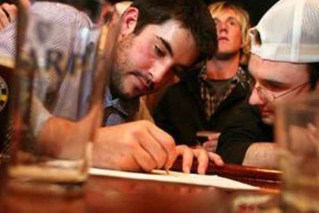A diagnosis for everything – but are we making a meal out of modern disorders?
Picky eating is nothing new but in generations past, you had to cop it sweet if you didn’t swallow what was served up to you, writes Michael Blucher


(Photo: Sharon McCutcheon, Unsplash)
The ravages of COVID aside, I can’t imagine why anyone would want to work in the hospitality industry in 2020.
Tough gig, particularly running a restaurant.
All the different food allergies, special requests and dietary requirements. These days, chefs almost need a double degree in microbiology and gastroenterology before they turn on a hotplate.
With a couple of good mates in the hotel game, I thought I was across all the dietary bullets there were to dodge, but then, like a fresh bun rising in an oven, a new one appears.
ARFID – anyone heard of that?
“Avoidant Restrictive Food Intake Disorder”. Also known as “extreme picky eating,” or more voluminously, “an eating disorder characterised by highly selective eating habits or disturbed feeding patterns, often resulting in significant nutrition and energy deficiencies. Particularly prevalent in small children.”
Without for a moment casting aspersions on the potential seriousness of the said disorder, it was the last few words of the medical precis that caught my eye – viz a viz, how common ARFID was among small children.
Small children – picky with food … imagine that?
Casting my mind back a million years to my own childhood, I suspect my brothers and I might have suffered intermittently from ARFID, never more so than when our mother served up corn beef with boiled potatoes, white sauce and a side of Brussels sprouts.
Fortunately, our kitchen table was in close proximity to a screenless window that opened out on to a spacious back yard, which included a swimming pool.
That window was the equivalent of our ARFID remedy, until one weekend when my mother spotted a hustle of Brussels sprouts, bobbing in the shallows of the pool steps.
That triggered a very different disorder. No television for a week. Goodness knows how many episodes of Matlock Police we missed, but it was plenty.
That’s the thing. In simpler times, there was no medically induced inquiry, no diagnosis, no dietary disorders. Kids just ate what was put in front of them, gratefully and graciously, without complaint.
And until you finished everything on your plate, in our household at least, the nightly developments of Matlock Police or Cop Shop or Leonard Teale’s Homicide remained a mystery. As did dessert.
Roll forward to 2020, and our daily intake of food seems to have become as much about science as it is about taste.
A mate who heads up a large hotel chain in southeast Queensland estimates every time he runs a function for 400 people, he’ll have between 35-40 per cent of guests with some sort of special dietary requirement.
Granted, quite a few of those change their mind when they see the size of the steak, or the inviting presentation of the chicken, but it’s still an astronomical figure.
He accepts as the new norm the need to employ additional chefs to prepare the range of different meals that the hotel is now required to serve. Front-of-house staff have to rely on colour-coded plates to assist waitstaff in unravelling the dinner time tangle.
It was through my GM mate that I was alerted to the “emergence” of ARFID. He hadn’t heard of it either, despite having worked in the hotel game for more than 30 years.
Through further reading, he came to understand that the disorder develops from “a complex interplay between genetic, psychological and sociocultural factors”.
He knew exactly what that meant. More coloured plates.
Again, without wanting to trivialise this space – there are clearly some very serious eating disorders the cause untold pain for individuals and their families – and they deserve our strongest sympathy.
But does every tiny modern-day, food-related abnormality or peculiarity need a label? Or are we finding solutions to problems that don’t need solving?
The other question I have – what role do we, as parents play in encouraging (or suppressing) the emergence of current and future eating disorders? I fear if we continue along the current path, at some point we’ll all be carrying around our own coloured plate.
And before we dismiss that as total frippery, another bloke I know – a highly intelligent, apparently sensible medico – will routinely prepare four different meals of an evening for his four daughters, based on what they are, and are not, prepared to eat.
Can’t see that playing out well in the future, not when they’re married with children of their own.
As a final aside, I’d be interested to understand just how prevalent ARFID is in places like India and Africa, where small mouths are grateful for any form of food, regardless of its glycemic index.
From what I read, the disorder is not nearly as rampant in Third-World countries.
Perhaps at this early stage, the disorder remains undetected.
Like it was in Kenmore, back in the 1970s.












